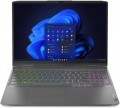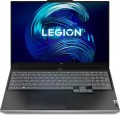Refresh rate
The frame rate supported by the laptop screen. In fact, in this case we are talking about the maximum frequency; the actual frame rate may be lower than this value, depending on the content being displayed — but not higher.
Theoretically, the higher the frame rate, the smoother the movement on the screen will look, the less moving objects will be blurred. In fact, the situation is such that even in relatively modest modern laptops,
60 Hz matrices are installed — in general, this is quite enough for the human eye, since a further increase in speed (
90 Hz and higher) does not significantly improve the visible “picture”. However, in high-end gaming and multimedia models designed for demanding users, higher values —
120 Hz,
144 Hz,
165 Hz and even
higher, namely
240 Hz and
300 Hz.
Brightness
The maximum brightness that a laptop screen can provide.
The brighter the ambient light, the brighter the laptop screen should be, otherwise the image on it may be difficult to read. And vice versa: in dim ambient light, high brightness is unnecessary — it greatly burdens the eyes (however, in this case, modern laptops provide brightness control). Thus, the higher this indicator, the more versatile the screen is, the wider the range of conditions in which it can be effectively used. The downside of these benefits is an increase in price and energy consumption.
As for specific values, many modern laptops have a brightness of
250 – 300 nt and even
lower. This is quite enough for working under artificial lighting of medium intensity, but in bright natural light, visibility may already be a problem. For use in sunny weather (especially outdoors), it is desirable to have a brightness margin of at least
300 – 350 nt. And in the most advanced models, this parameter can be
350 – 400 nt and even
more.
Colour gamut (sRGB)
The colour gamut of the laptop matrix according to the Rec.709 colour model or according to sRGB.
Colour gamut describes the range of colours that can be displayed on the screen. It is indicated as a percentage, but not relative to the entire variety of visible colours, but relative to the conditional colour space (colour model). This is due to the fact that no modern screen is able to display all the colours visible to humans. However, the larger the colour gamut, the wider the screen's capabilities, the better its colour reproduction.
Specifically, sRGB and Rec.709 are the most popular of today's colour models; they have the same range and differ only in the scope (sRGB is used in computers, Rec. 709 is used in HDTV). Therefore, the closer
the colour gamut is to 100%, the more accurately the colours on the screen will match the colours that were originally intended by the creator of the film, game, etc. At the same time, note that such accuracy is not particularly needed in everyday use — it critical only for professional work with colour; and even in such cases, it is more convenient to buy a separate monitor with a wide colour gamut for a laptop, rather than looking for a laptop with a high-quality (and, accordingly, expensive) matrix.
Colour gamut (NTSC)
The colour gamut of the laptop matrix according to the NTSC colour model.
Colour gamut describes the range of colours that can be displayed on the screen. It is indicated as a percentage, but not relative to the entire variety of visible colours, but relative to the conditional colour space (colour model). This is due to the fact that no modern screen is able to display all the colours visible to humans. However, the larger the colour gamut, the wider the screen's capabilities, the better its colour reproduction.
Specifically, NTSC is one of the first colour models created back in 1953 for colour television. It is not used in the production of modern LCD matrices, but is used to describe and compare them. NTSC covers a wider range of colours than sRGB, which is standard in computer technology; therefore, even a small number of percentages in this case corresponds to a fairly wide coverage. For example, a value of
72% or more in NTSC is already considered a good value for use in design and graphics. At the same time, the same NTSC figures on different screens may correspond to different sRGB figures; so if accurate colour reproduction is decisive for you, these details should be clarified before buying.
Also note that among individual monitors, it is easier to find a screen with a wide colour gamut; while it will also cost less than a laptop with similar display characteristics. So choosing a laptop with a h
...igh-end screen makes sense mainly when portability is as important to you as high-quality colour reproduction.Pantone certification
This feature means that the laptop screen has received
the Pantone Validated certification.
Pantone is a professional colour system created by the company of the same name and widely used in design and printing. One of Pantone's basic ideas is that each colour should remain the same at all stages of work — from agreeing on a general idea to printing / releasing the final product; To do this, all shades covered by the system are assigned code names, which are used in the work. In the case of laptops, Pantone certification means that when working with materials and software tools that use a given colour scheme, the colours on the screen will match the actual Pantone hues as closely as possible.
We emphasize that there is no question of perfect correspondence (LCD matrices are not physically capable of adequately displaying some shades); in addition, screens with such certification may have different colour gamuts — both in percentages and in the systems used for designation (sRGB, Adobe RGB, DCI P3 — see above). However, even if the colour is beyond the capabilities of the screen, it will be displayed as accurately as possible. Therefore, for professional tasks associated with intensive use of Pantone, it is worth choosing monitors with official certification; An example of such tasks is the printing of image printing.
TÜV Rheinland certificate
Laptop display certification for safe blue light emission levels and panel flicker rates.
The presence of a TÜV Rheinland certificate confirms that the screen is comfortable for the eyes.
TÜV Rheinland is a large international concern headquartered in Cologne, Germany, providing a wide range of audit services. The company's specialists have developed and approved a number of tests for the compliance of the screens of mobile devices, monitors and TVs with the required level of eye protection from the harmful effects of display radiation on the user's vision on the other side of the screen. The authoritative opinion of TÜV Rheinland is respected in the tech community. Certificates from this body are issued to successfully tested electronics for the implementation of blue light filtering and screen flicker suppression technologies.
HDR
HDR technology format supported by the laptop.
This technology is designed to expand the range of brightness reproduced by the laptop screen; Simply put, an HDR screen will display brighter whites and darker blacks than a regular matrix. In fact, this can significantly improve image quality. First, the expansion of the dynamic range contributes to the brightness and fidelity of colours on the screen; secondly, the visibility of individual details in very bright or very dark areas of the frame is preserved (whereas on a normal screen such details often “sink” in solid white or black).
Note that in order to fully use this function, you need not only
a laptop with HDR, but also the corresponding content (video files recorded in HDR, games where this technology is implemented, etc.). In addition, the laptop must support the HDR format used by the content being played. Nowadays, you can find such options:
— HDR10. Historically the first of the consumer HDR formats, less advanced than those described below, but extremely widespread. In particular, HDR10 is supported by almost all streaming services that provide HDR content at all, and it is also common for Blu-ray discs. Allows you to work with a colour depth of 10 bits (hence the name). At the same time, devices of this format are also compatible with content in HDR10 +, although its quality will be limited by the capabilities of the original HDR10.
...— HDR10+. An improved version of HDR10. With the same colour depth (10 bits), it uses the so-called dynamic metadata, which allows transmitting information about the colour depth not only for groups of several frames, but also for individual frames. This results in an additional improvement in colour reproduction.
Dolby Vision. An advanced standard used particularly in professional cinematography. Allows you to achieve a colour depth of 12 bits, uses the dynamic metadata described above, and also makes it possible to transmit two image options at once in one video stream — HDR and normal (SDR). At the same time, Dolby Vision is based on the same technology as HDR10, so in laptops it is almost guaranteed to be combined with at least HDR10, and even with HDR10 +.Model
The specific model of the processor installed in the laptop, or rather, the processor index within its series (see above). Knowing the full name of the processor (series and model), you can find detailed information on it (up to practical reviews) and clarify its capabilities.
Code name
The code name for CPU installed in the laptop.
This parameter characterizes, first of all, the generation to which the processor belongs, and the microarchitecture used in it. At the same time, chips with different code names can belong to the same microarchitecture/generation; in such cases, they differ in other parameters - general positioning, belonging to certain series (see above), the presence / absence of certain specific functions, etc.
Nowadays, the following code names are relevant in Intel processors:
Coffee Lake,
Comet Lake,
Ice Lake,
Tiger Lake,
Jasper Lake,
Alder Lake,
Raptor Lake (13th Gen),
Alder Lake-N,
Raptor Lake (14th Gen),
Meteor Lake (Series 1),
Raptor Lake (Series 1),
Lunar Lake (Series 2),
Arrow Lake (Series 2).
For AMD, the list looks like this:
Zen 2 Renoir,
Zen 2 Lucienne,
Zen 3 Cezanne,
Zen 3 Barcelo,
Zen 3+ Rembrandt,
Zen 3+ Rembrandt R,
Zen 2 Mendocino,
Zen 3 Barcelo R,
Zen 4 Dragon Range,
Zen 4 Phoenix
Zen 4 Hawk Point,
Zen 5 Strix Point,
Zen 5 Strix Halo.
Detailed data on different code names can be found in special sources.

